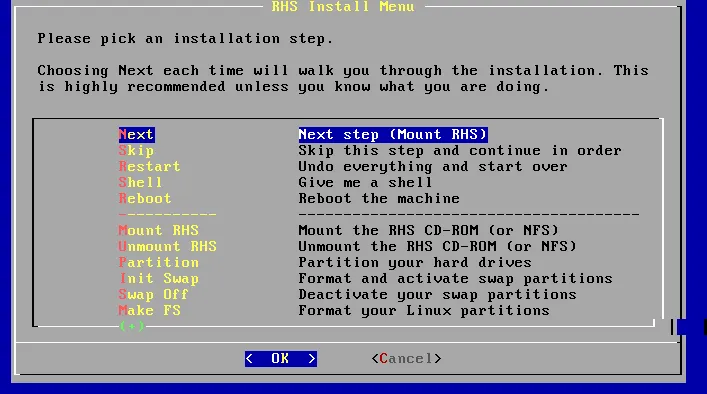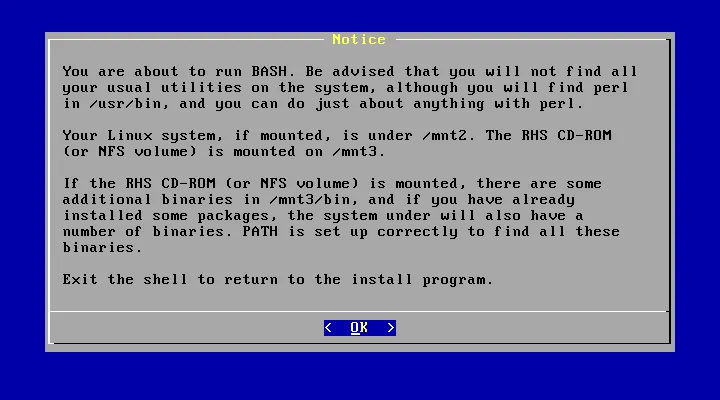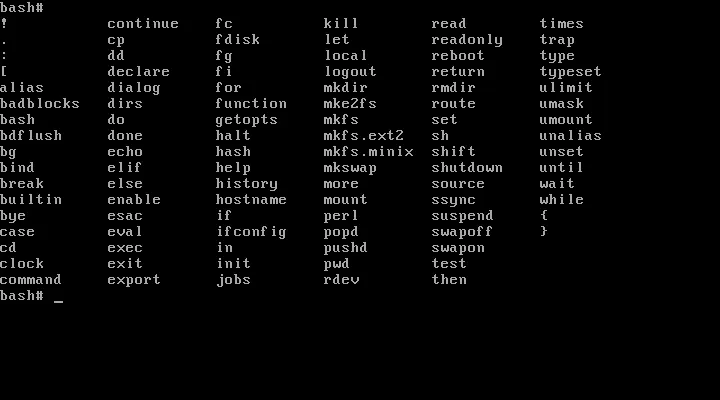At Red Hat we have a particular fondness for Halloween. Sure, there's the carved pumpkins, and costumes, and candy, and Trick-or-Treating, scary movies, and… did we mention candy? But, in addition to all that, the first public Red Hat release was unleashed on the public on October 31, 1994. Let's take a step back in time and see what a Linux release looked like in the far reaches of the past.
What's in a name?
In many stories and myths, naming is important. Knowing the proper name of something gives you power over it. Likewise, naming has been important for Red Hat Linux over the years.
The Halloween release was actually a paid beta and not a 1.0. The Halloween release was dubbed Red Hat Software Linux 0.9, and started a tradition of having a codename for the release that lasted through the final Red Hat Linux release (9.0.93, "Severn"), and carried over to Fedora for many years.
The tradition was to have a name for a release that was somewhat related to the previous release name. For example, the 1.0 release was "Mother's Day," and "Rembrandt" followed "Picasso," and "Colgate" followed it. (For the record, the best release name was a Fedora release, dubbed "Zod." Allowing many fun headlines playing off the Superman II villain.)
What's in the box?
OK, actually there was no box. The first Red Hat Linux release was a pretty modest affair. It included a spiral-bound manual, appears to be typeset with LaTeX (of course), and a CD-ROM. Before you get too excited that you could just install from the CD-ROM… nope. The CD included a number of floppy disk images one would copy using dd or the RAWRITE DOS utility for writing floppies.
 Users could pick from a stable 1.0 Linux kernel (not recommended) or 1.1.18 ("a very stable kernel"), or the latest 1.1.54 Linux kernel that included a few new device drivers.
Users could pick from a stable 1.0 Linux kernel (not recommended) or 1.1.18 ("a very stable kernel"), or the latest 1.1.54 Linux kernel that included a few new device drivers.
You want scary? The device options were way less standard than they are today. Forget "plug and play" devices where you could count on support for just about any SATA drive, users had to pick a kernel and floppy image that would support specific devices from SONY, SoundBlaster, Panasonic, etc. Good luck if your devices were unsupported.
You also needed at least a 386 with 4MB of RAM and a whopping 500MB of disk space to install "everything."
Summoning the spirit of Red Hat
I took a run, actually several, at getting the Halloween release up and running with KVM. On my own, I got as far as the infamous `LI` trying to boot from one of the floppy images using the Virtual Machine Manager and KVM/QEMU. As we noted in the 28 facts piece in August, in the days before GRUB, many Linux distributions used the LILO boot loader. It was common for users to run into problems with LILO, and you knew if you got `LI` you had gotten to the second stage of boot loading but failed afterwards because it couldn't find the rest of the loader.
After reaching out for an assist from one of the Red Hat's KVM experts, I managed to get the installer going and was able to explore the Linux Installation Manager (LIM) and configuration tools there. Unfortunately, I was unable to find a supported device in KVM for CD-ROM or networking to move past the installer to actually setting up the full system.

From the installer I could drop to a Bash shell, but back in the days of yore there was little to be done from what you could fit on a floppy.

The collection of utilities available at the shell didn't even include ls, though if I could have gotten the kernel to recognize the virtual disk I could have at least formatted it with an Ext2 filesystem.

What could you do with the Halloween release?
Despite hitting a brick wall with the device support, there's enough information to piece together the capabilities of the Halloween release. Linux had quite a few rough edges in 1994. Then again, computing in general had a lot of rough edges in 1994, and Red Hat Linux was in some ways ahead of the curve.
With RHSL 0.9, Red Hat included its proto-package manager, Red Hat Program Package (RPP) which was largely intended to be used by the installer only. It included a query option, the ability to install and remove packages, and even the ability to update packages. The manual warned the update feature might go away because "no one uses them" and "there are more important features to develop." At least history shows that people do, in fact, like to update things in place.
RHS (once installed) also sported a Tcl/Tk GUI control panel to simplify things like managing users and groups, configure file systems, configure printers, networks, time & date, and search the man pages, info pages, and other help docs.
Users had, at their fingertips, a modern (at the time) X Window System (XFree86), typesetting (LaTeX), Sendmail, some games (including xtetris), GNU Emacs, and NCSA's HTTPD server version 1.3. RHSL also included a bevy of compilers and programming tools as well. Oh, and of course, Doom. Specifically an X port of Doom with the Shareware game file.
All of this, plus 30 days installation support, for the low low price of $49.95 -- or $39.95 for the "introductory special." And $5 shipping within the U.S.
The rest is history
According to Erik Troan in 2014, the company only made about 500 copies of the Halloween release. But it was a start, and led the company down the path to RHEL and beyond.
As Troan said, "I still see elements of ‘Halloween’ in Red Hat Enterprise Linux, even to this day. The distribution had strong package management (through "rpp" as rpm wasn't written yet!), a relatively friendly installer, and tools designed to allow Linux adoption by individuals without a strong Unix background. Those same traits continue to inform Linux development at Red Hat today. Red Hat Enterprise Linux has succeeded because it continues to bring the power of Linux to audiences who don't want to learn the minutiae of system administration."
Indeed. We've come a long, long way from having to fuss with specific kernel/floppy image combinations to wantonly bestow a spark of existence to a system. RHEL is far more powerful (as is the hardware) and portable than we could have imagined in 1994. Not only that, but we can even rely on services like Red Hat Insights to point out possible vulnerabilities and predict and remediate problems before they occur. Just imagine what another 25 years will bring.
About the author
Joe Brockmeier is the editorial director of the Red Hat Blog. He also acts as Vice President of Marketing & Publicity for the Apache Software Foundation.
Brockmeier joined Red Hat in 2013 as part of the Open Source and Standards (OSAS) group, now the Open Source Program Office (OSPO). Prior to Red Hat, Brockmeier worked for Citrix on the Apache OpenStack project, and was the first OpenSUSE community manager for Novell between 2008-2010.
He also has an extensive history in the tech press and publishing, having been editor-in-chief of Linux Magazine, editorial director of Linux.com, and a contributor to LWN.net, ZDNet, UnixReview.com, and many others.
More like this
More than meets the eye: Behind the scenes of Red Hat Enterprise Linux 10 (Part 4)
Looking ahead to 2026: Red Hat’s view across the hybrid cloud
GitOps with Argo CD | Technically Speaking
Open source for climate finance | Technically Speaking
Browse by channel
Automation
The latest on IT automation for tech, teams, and environments
Artificial intelligence
Updates on the platforms that free customers to run AI workloads anywhere
Open hybrid cloud
Explore how we build a more flexible future with hybrid cloud
Security
The latest on how we reduce risks across environments and technologies
Edge computing
Updates on the platforms that simplify operations at the edge
Infrastructure
The latest on the world’s leading enterprise Linux platform
Applications
Inside our solutions to the toughest application challenges
Virtualization
The future of enterprise virtualization for your workloads on-premise or across clouds
